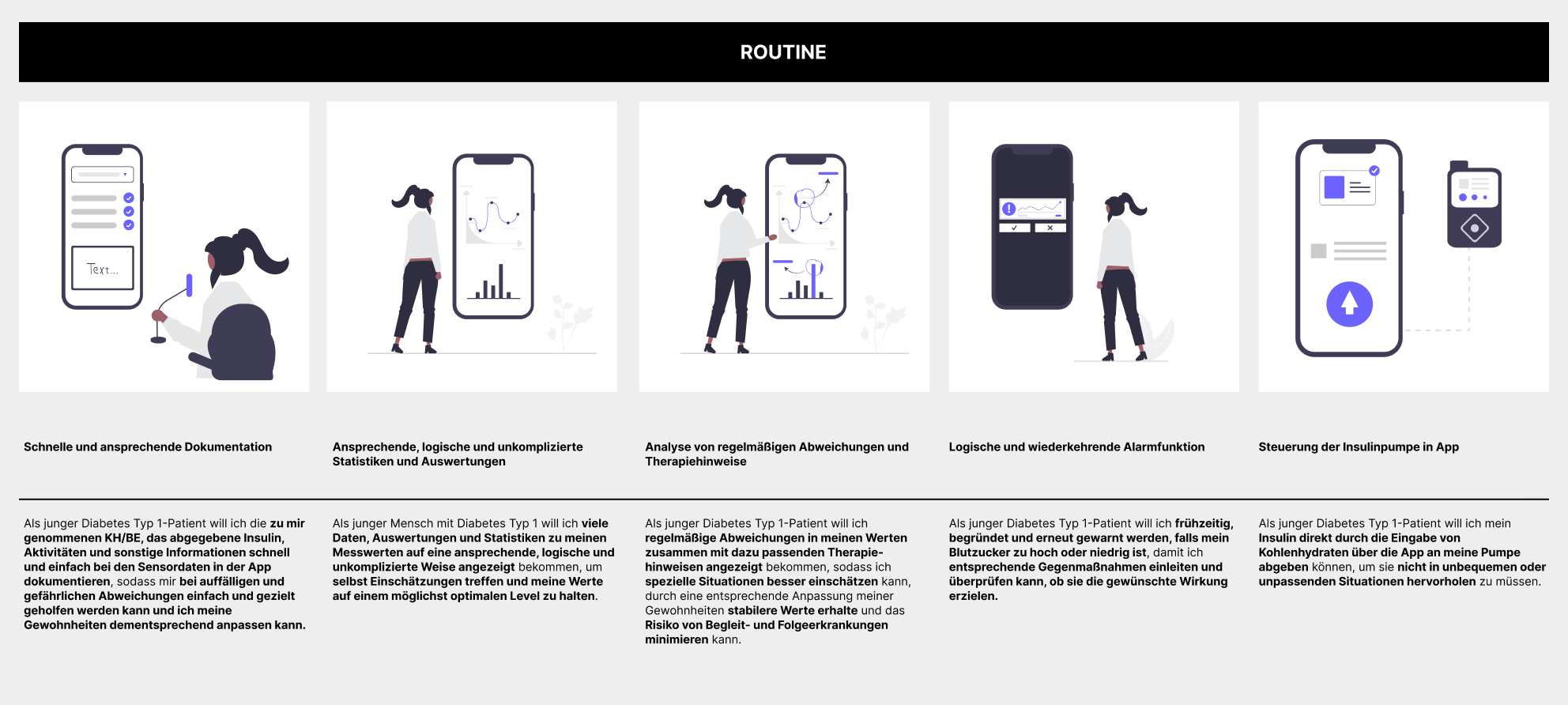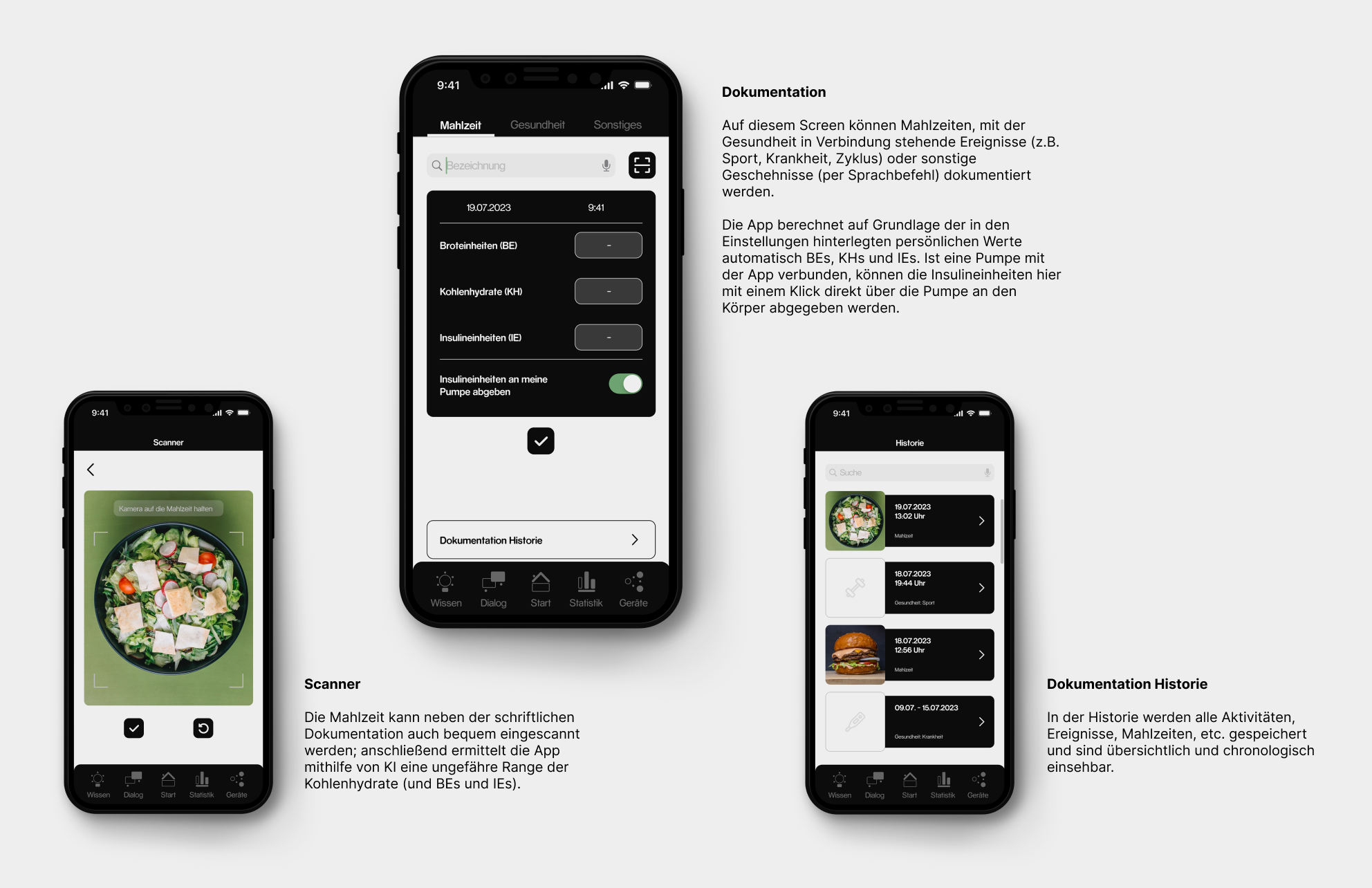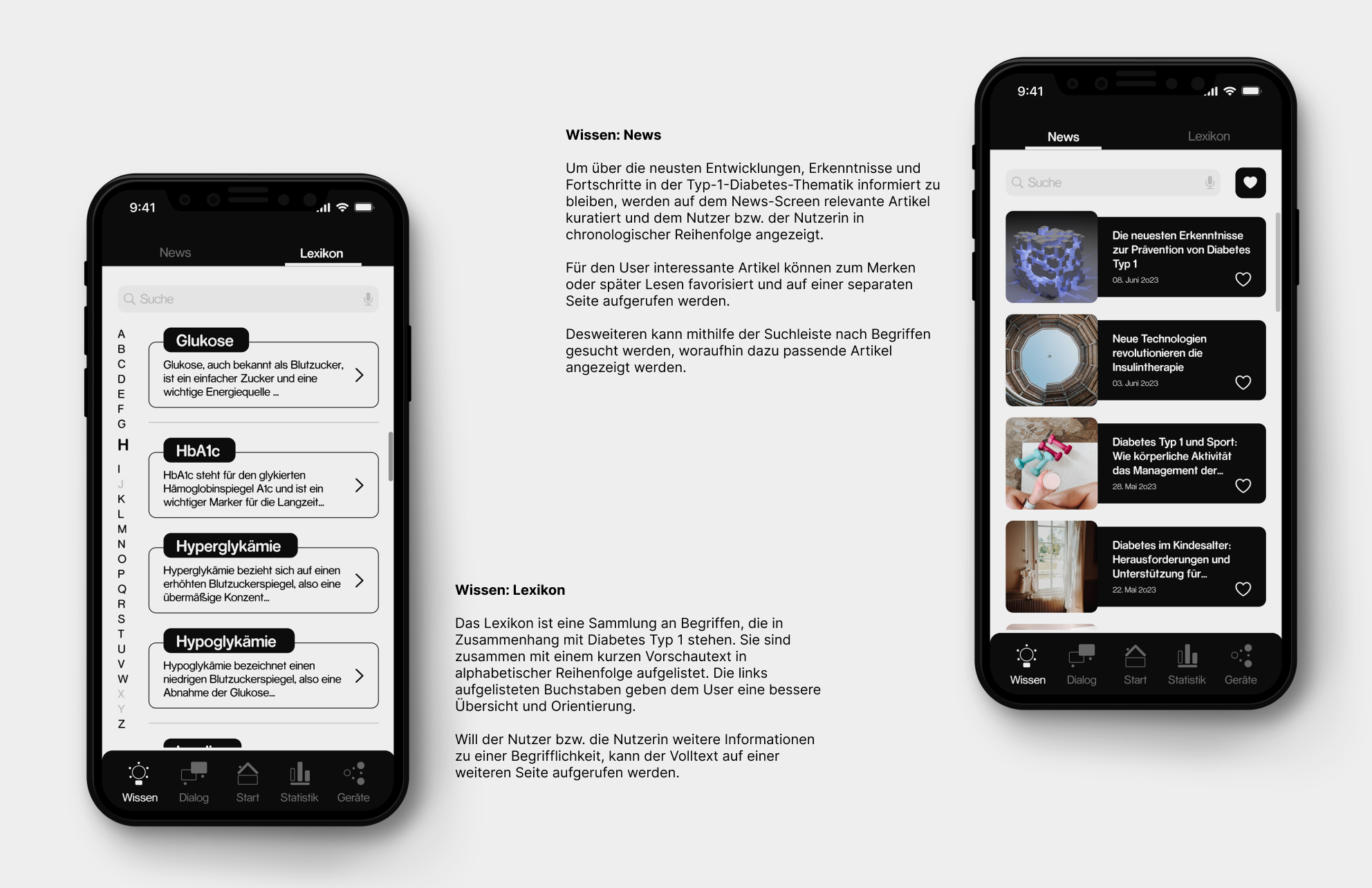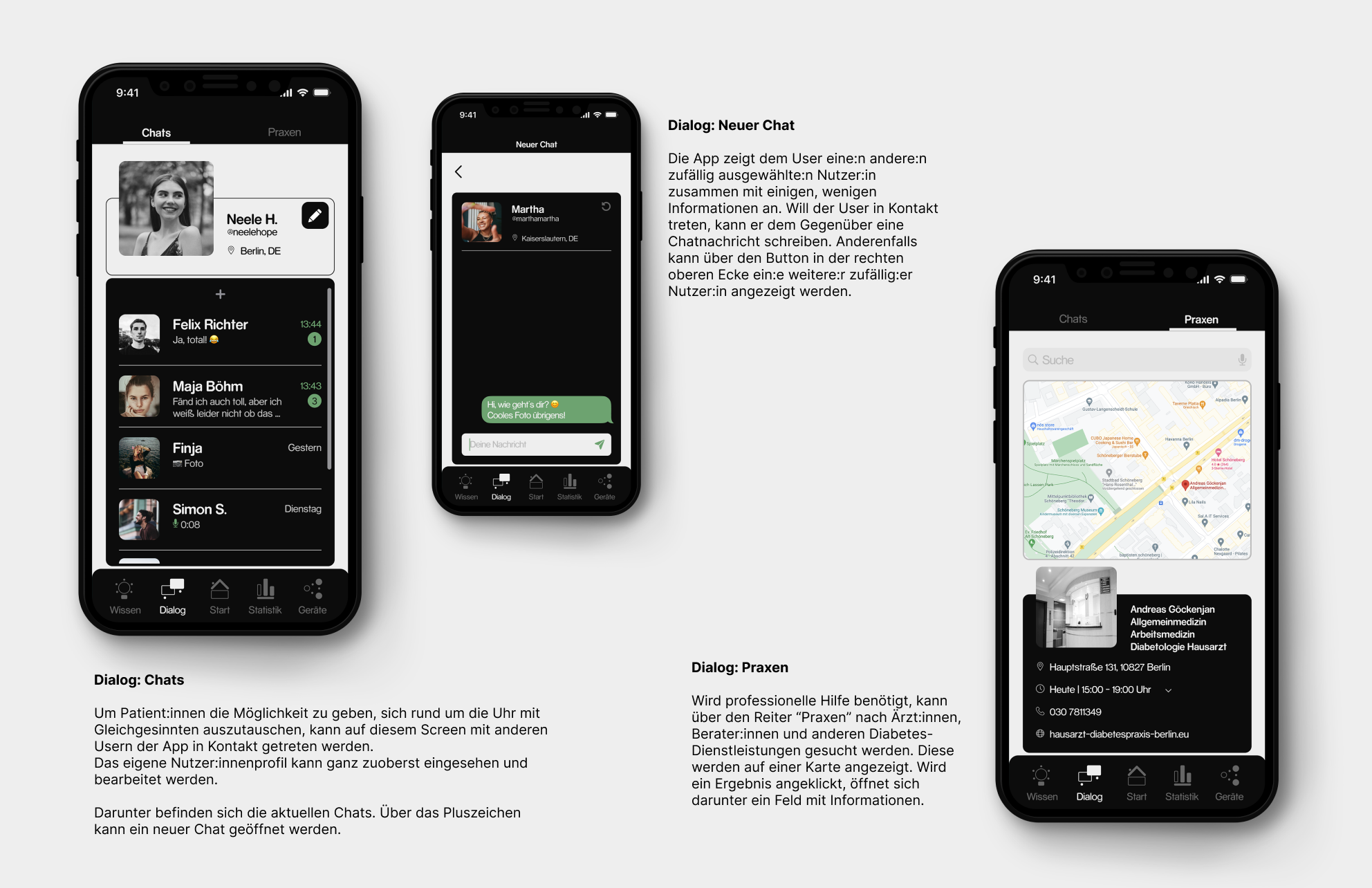DIAHELP
Design of a diabetes app adapted to the target group in the best possible way
In the scientific part of my bachelor thesis, I researched the effects of a type 1 diabetes diagnosis on young adults. I studied the physical, psychological, and social impact of the chronic disease on the lives of individuals between the ages of sixteen and thirty. The results of my research contribute to a better understanding of the stressful challenges and special risks of the focused target group, which impair diabetes therapy and seriously increase the risk of secondary and comorbidities. There are already some efforts and technologies that make everyday life with type 1 diabetes easier and improve the quality of life. Nevertheless, further efforts and tailor-made solutions are needed to provide young diabetes patients with the best possible support in dealing with the disease.
Among other things, there is great potential for improvement in apps that many sufferers use to monitor their glycemic values today. In particular, the missing functionalities and the non-existent consideration of the target group needs aroused my interest. That’s why I decided to develop a clickable prototype of a diabetes app that is best adapted to the target group in the practical part of my bachelor thesis. The secondary target group is made up of diabetes advisors to the primary target group of young adults (sixteen to thirty years old, f/m/d) with type 1 diabetes who live in Germany and wear CGM (+ pump) who are connected to an iOS app.
After theoretical research on the topic of diabetes mellitus, I conducted qualitative interviews with diabetes caregivers and young adults with type 1 diabetes to collect personal experiences, views, and thoughts. Their stories and perspectives helped me to develop a deeper understanding of the challenges and needs of this target group and to gather some interesting findings. The aim of the survey was to find out what an app needs to support type 1 diabetes patients and medical staff in caring for these patients and what is a hindrance. The interviews each lasted about one to two hours. The two male and four female participating patients are between 22 and 26 years old and were diagnosed between the ages of two and twenty. They all wear a CGM device, but one of them also uses a blood meter for calibration every day. Two wear a tubeless patch pump, three wear a peristaltic pump, and one injects using an insulin pen. Five participants use an app, one does not. Both counselors interviewed work in an internal medicine practice with a focus on diabetology, which looks after patients between the ages of sixteen and 95 years. Both have the title diabetes consultant DDG, one is also a specialist in health and social affairs.
The insights were then grouped into five different thematic blocks to get a better overview of the different pain points. These are: Alerts/Reminders, Knowledge Sharing/Assistance/Advice/Doctor Visits, Difficulty Assessing Carbs/Documentation/Machine Learning, Glucose Value/Stats/Data/Design, and App x Sensor x Pump. After the overview of the pain points was created, "How Might We" questions were collected for these problems to generate targeted solutions.
The next steps in the development of an MVP or MMP to manage type 1 diabetes mellitus are the preparation of user tests, evaluation of the results, revision of the prototype, involvement of other relevant stakeholders such as programmers and representatives of CGM and pump manufacturers, to also take their views and limitations into account. Another test should also be scheduled, which is less about the content of the app and more about the user experience. For this purpose, several versions of the same screen can be shown as part of an A/B test to find out which display the subjects prefer.
Time: 01.2o23 - 07.2o23
My tasks: theoretical research, market analysis, qualitative interviews, synthesis (pain points, HMWs), creation of personas, creation of the patient journey incl. needs and features, creation of Wireframes, creation of the digital click-prototype
MockUps: Designed by Freepik












